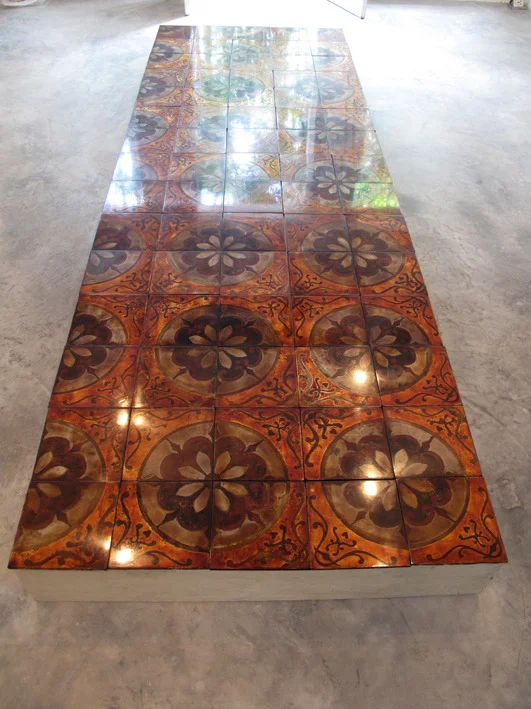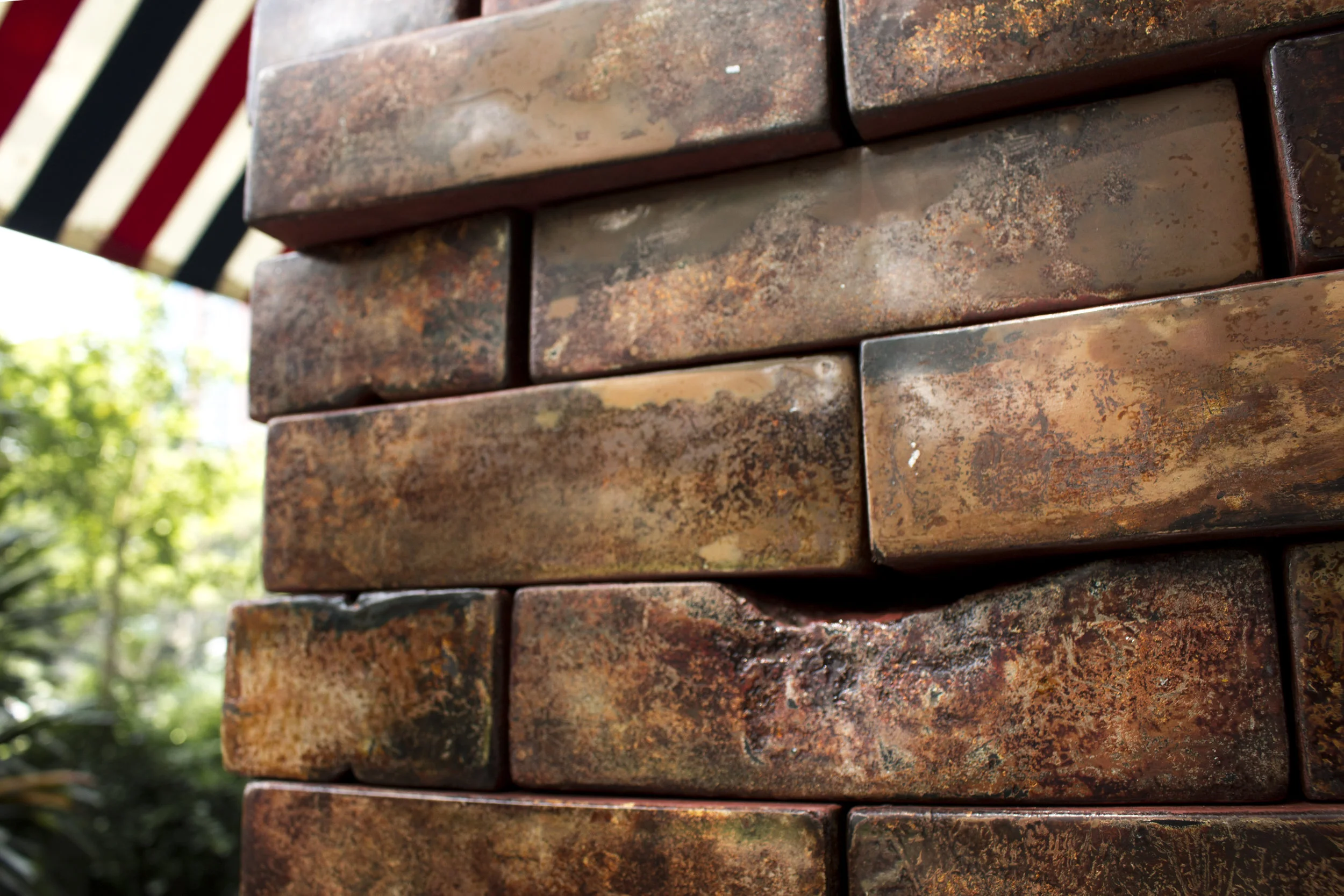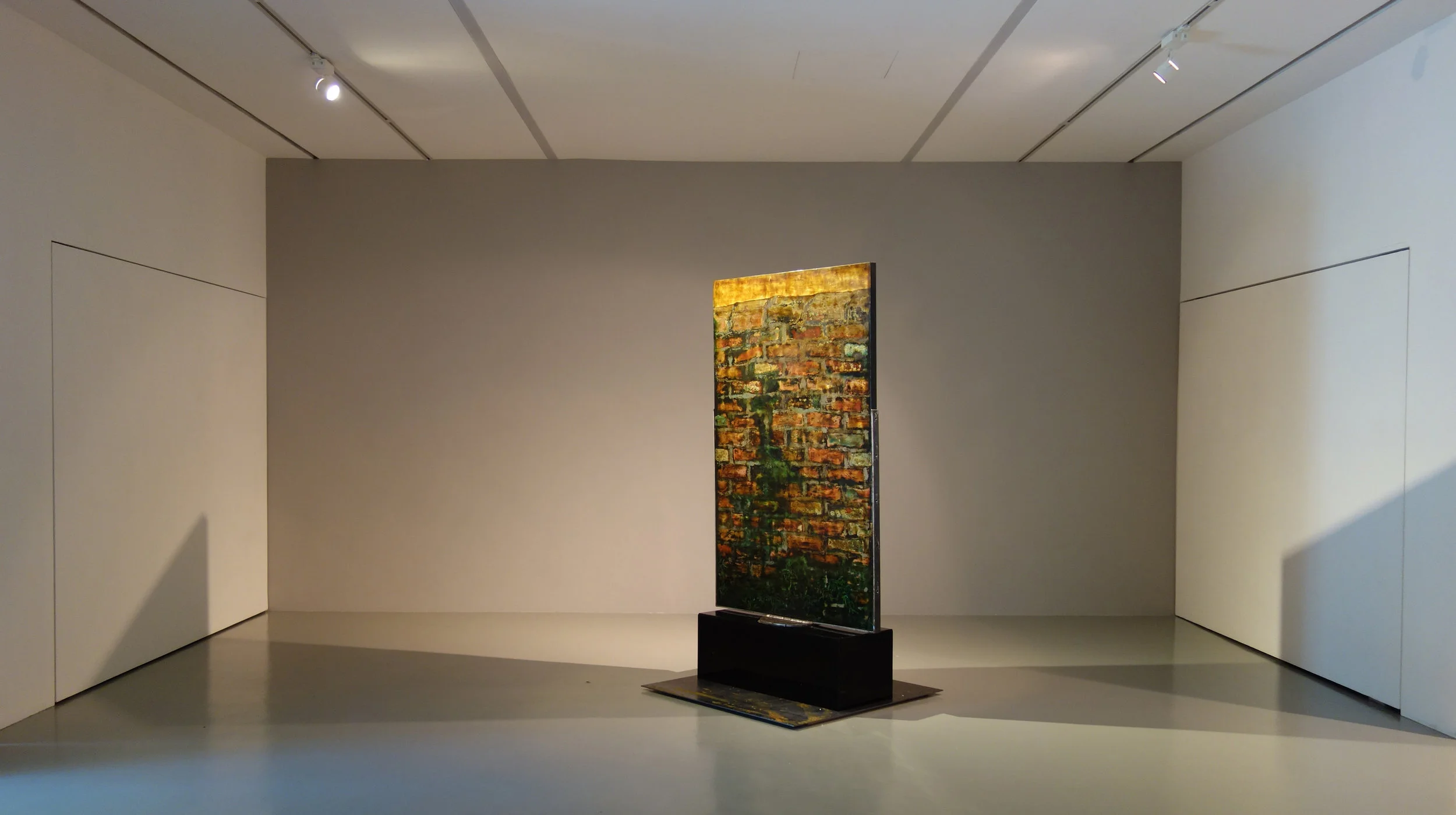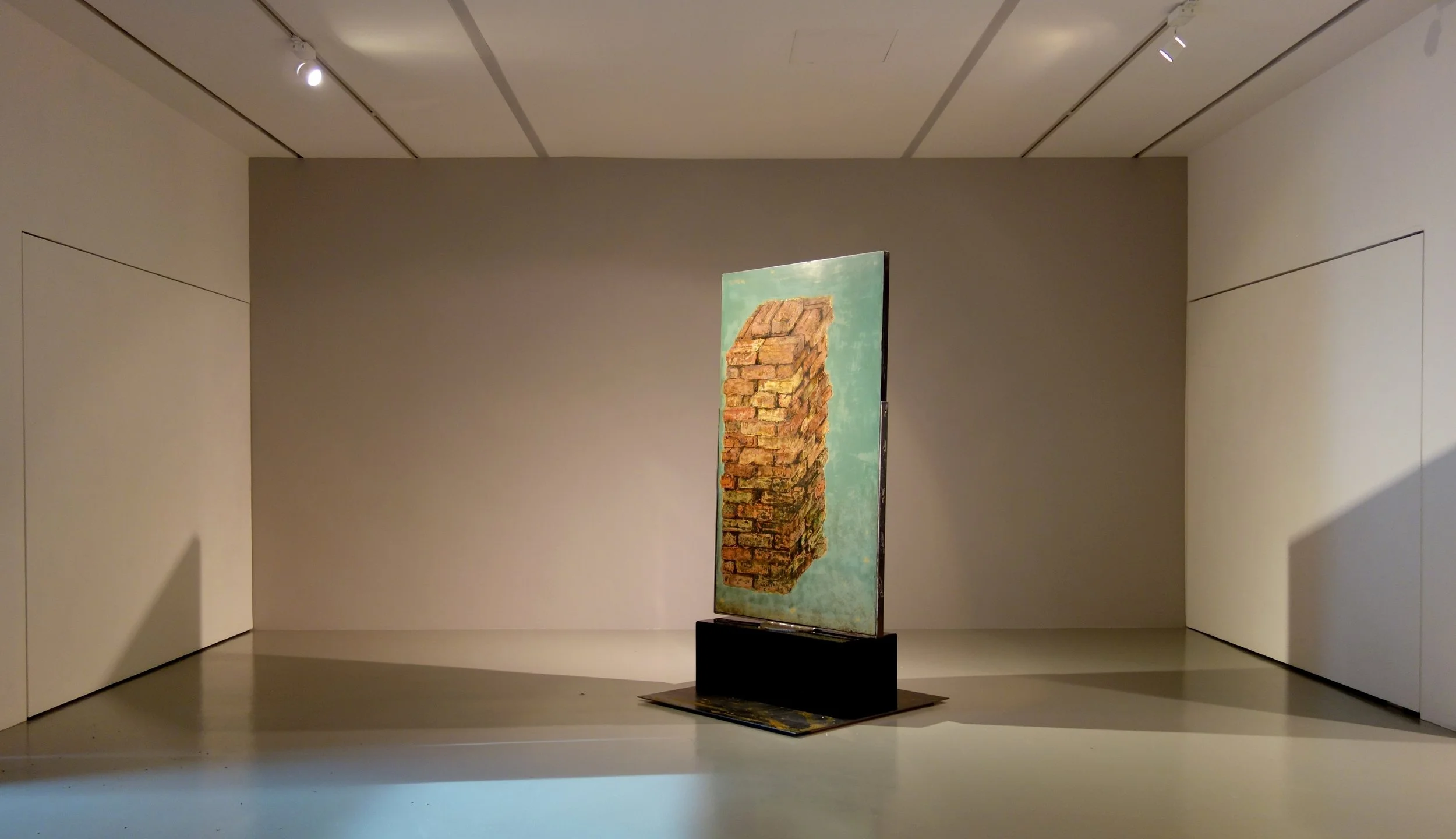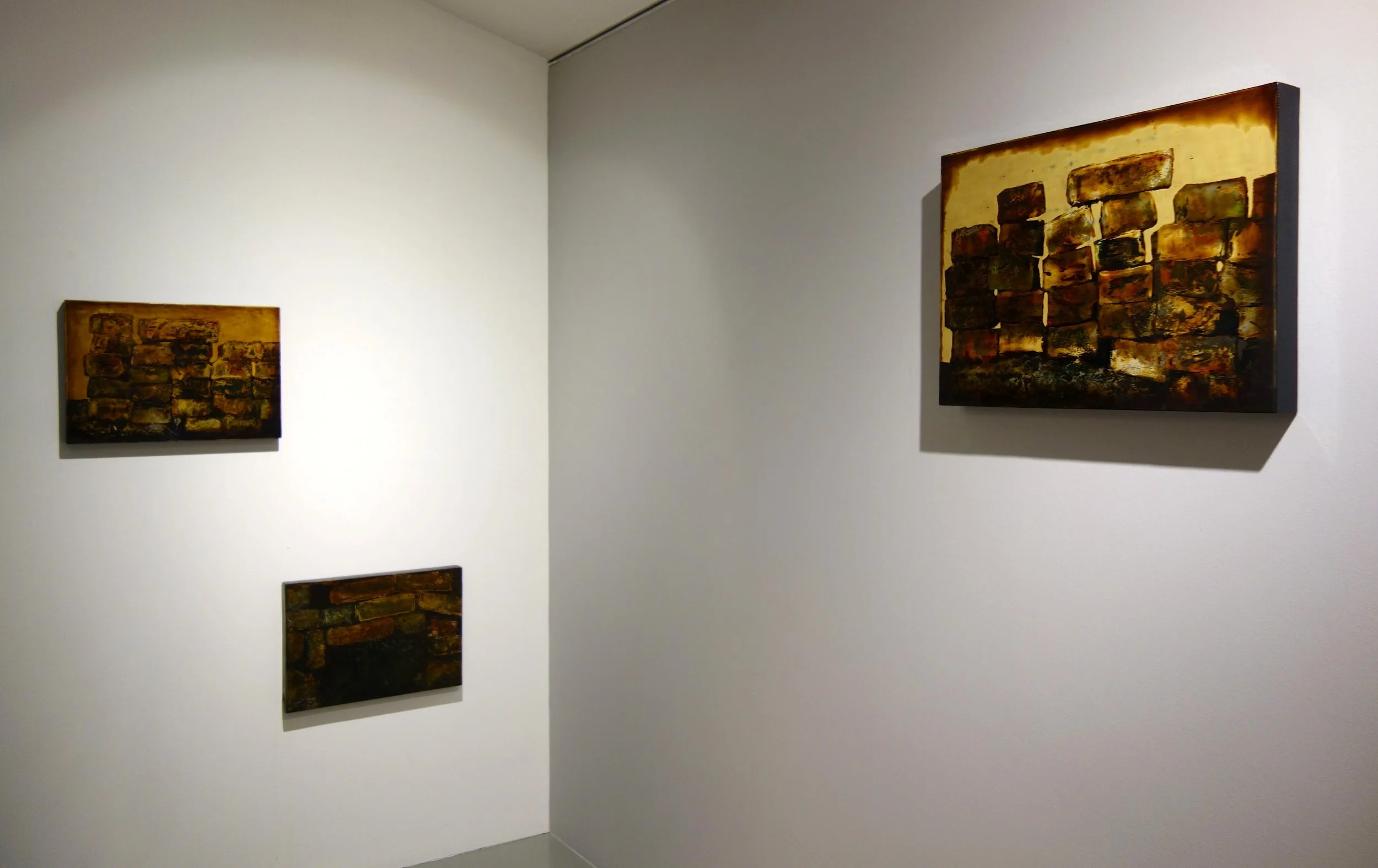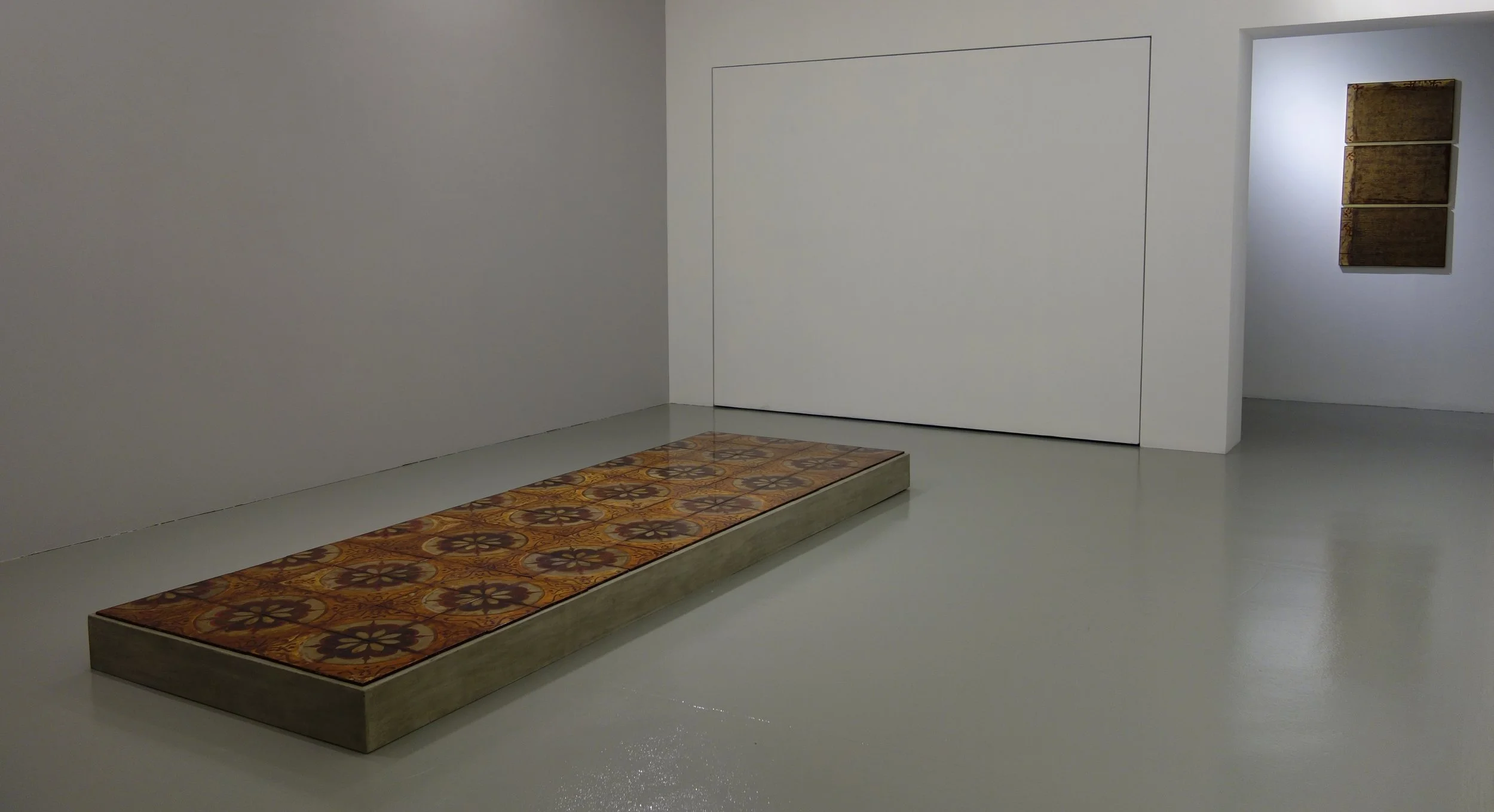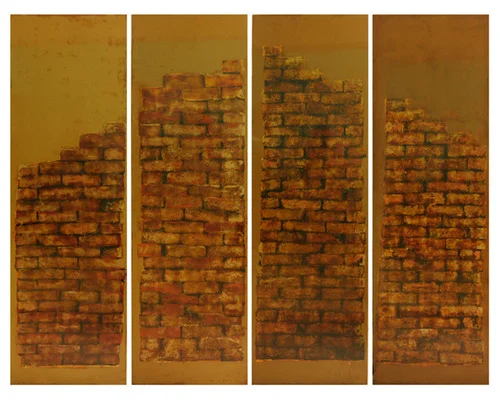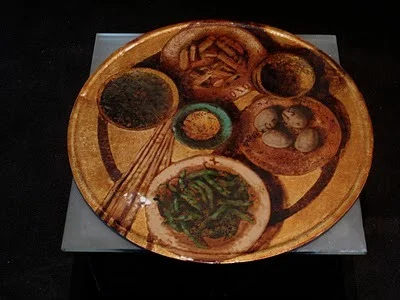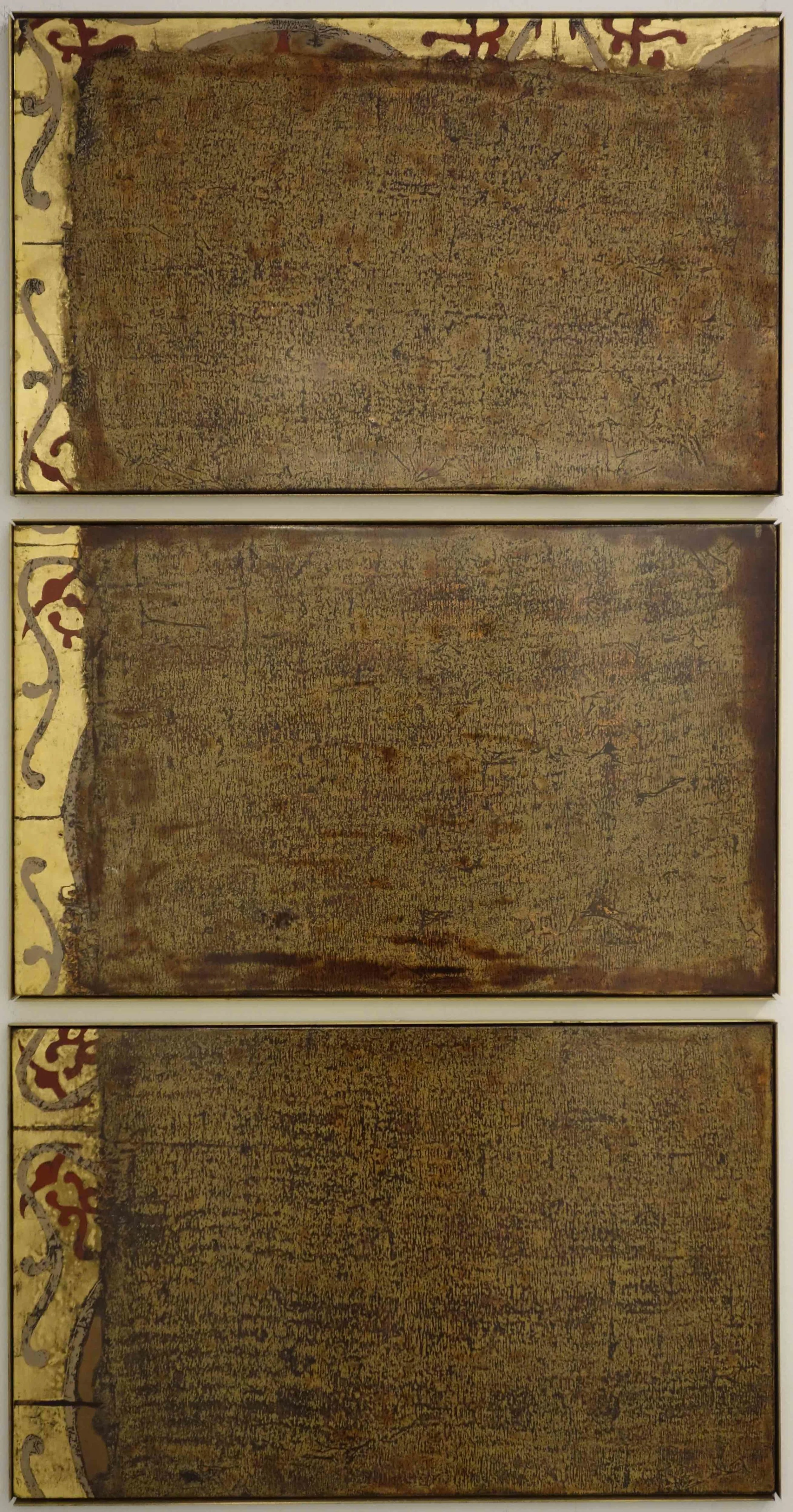“Make Shift comprises of representations in lacquer painting of four stacks of bricks, a modest dinner tray for four, a straw mat, floor tiles, and a set of buckets on a rainy day—basic articles found on any construction site. Together they reflect the provisionary nature of life while biding time waiting during the construction of a true home. Visible on almost every street throughout this city, this condition is merely an echo of the changing urban landscape of Hanoi.
An offshoot of Specula, the works from this exhibit emerged from my experiments in new surfaces to create Specula’s curved ceiling. Make Shift includes my experiments using Vietnamese son ta heat cured onto iron and recycled metal, an old industrial Japanese lacquer technique that I adapted to natural Vietnamese lacquer.”
OBELUS, A SCULPTURE
Son ta on iron bricks, stacked
315 bricks, 22cm x 12cm x 6cm/ unit
Originally commissioned by the National Arts Council, Singapore for Lock Route, a public art showcase at Gillman Barracks, January - June 2017.
Brief Artist statement:
Obelus is a sculpture that looks like a construction site brick stack around which the pedestrian must navigate on the way to their destination. Composed of 315 individual “bricks” made of steel and represented realistically with lacquer painting, this stack forms a human sized obelisk.
Bricks are a common reoccurring motif within my work. Symbolically brick to me represents the most basic unit of material from which human culture and habitat is constructed. Small but dense, each brick at rest is a monument to potential. In a time when walls and cities are being erected rather than taken down, this sculptural composition urges each of us to consider how we should exercise our will to power.
In terms of medium, I also use bricks to explore and reiterate the specificity of Vietnamese lacquer and its capacity for mimesis of surface essences. By painting bricks, I am reminded that the possibilities of the medium of lacquer as painting is not about how it represents matter like an optical trick but rather how it performs a becoming of matter.
For those accustomed to seeing lacquer as a “precious” material, this way of representation creates an unexpected contrast. For the casual passerby who assumes they are crossing yet another construction site, the rich materiality of the lacquered surface will hopefully make them stop and look and perceive the unit of bricks symbolically.
This is accompanied by an upgraded version of the iconic red, white, and blue “construction tarp”. Sewn together by with higher quality awning material this tarp serves dual functions—shading the lacquer from direct sunlight and marking this as a site in construction. This work is modular and can be readapted to other spaces.
LOCK ROUTE
Official launch: during Art After Dark 13 January 7PM - 30 June 2017
Various locations around Gillman Barracks
Open 24 hours to the public
For more information about this exhibition please click here...
Cadastre
Cadastre
Sơn ta on iron,
75 tiles, 20 x 20cm/ tile, 3m x 1m x 0,8m
Hà Nội, 2009
About the work Cadastre
Measuring exactly three square meters in floor space, Cadastre visually graphs the minimal amount of land for one individual.
Comprising of 75 (20 x 20 cm) tiles, Cadastre is a floor sculpture that employs natural lacquer (son ta) baked onto iron to faithfully represent mass-produced ceramic floor tiles used in building construction. Inspired by the artist Carl Andres idea of emplacement and sculptural relativity, I reintroduce a narrative element to portray the time worn patterns all too familiar in old Hanoi buildings.
Dramatic lighting, the golden properties of lacquer and the density of iron give the cadastre a transcendental weight.
Photo courtesy of Fost Gallery
Sudarium
Photo courtesy of Fost Gallery, Singapore
Sudarium
Lacquer on wood
35cm x 57cm x 2cm / each, triptych
Hanoi, 2017
About the work Sudarium
The name Sudarium comes from the Latin term for a sweat cloth used for wiping the face in Ancient Roman court ceremony. In the Christian tradition, such an item has evolved into a relic, an object and image of veneration, an apparition of the divine in human sweat.
The straw mat is like a symbolic hearth in Vietnamese society, the place around which the family gathers for daily meals, weddings, death anniversaries, naps. Upon it, day after day from repeated use, the sweat and the weight of the body is imprinted. This triptych is not only a representational image of a worn and battered straw mat, but rather it is like a physical fossil of its existence. Vietnamese natural lacquer (son ta) lacquer here becomes the ground onto which the history of the object is physically imprinted and graphically recorded. The texture of the mat at a distance looks like some lost ancient script. In her work, Phi Phi explores lacquer painting not only as a medium, but as a material signifier of the history ideological changes in Vietnam.
